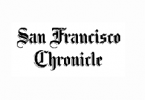Article via Inc. Magazine: In the 1940s, Joseph M. Juran coined the “80-20 rule,” which posits that there are a “vital few and trivial many” or that 20 percent of the causes drive 80 percent of the results. He named his rule the “Pareto principle” after an Italian economist named Vilfredo Pareto, who observed that 20 percent of the people owned 80 percent of the wealth in his country.
It’s not just a history lesson. Data shows that there is indeed a “vital few” for small business owners, and that they can take three simple steps to use this fact to grow their business.
For most businesses, 20 percent of customers drive 80 percent of sales. The key is to find your 20 percent and keep them happy.
Our company analyzed data from thousands of small businesses across a dozen verticals like coffee and tea, restaurants, retail, and nightlife, and our observation is that on average 20 percent of a small business’s customers drive over 72 percent of their visits. These “vital few” were people who visited these businesses more than 10 times. In some verticals like coffee and tea, the proportion driven by the “vital few” was higher and in the 80 percent plus range, and in some verticals like retail it was slightly lower, but the principle of the vital few remained remarkably consistent across all verticals: A relatively smaller percentage of customers drove the vast majority of visits and thus revenue for these small businesses.
What’s the implication for small business owners? It’s three-fold.
1. Protect the Vital Few.
Our data shows that a small business’s VIP customers – the ones who come over 10 times to a business – are the ones that drive the vast majority of revenue. As a result, losing a VIP has disproportionate impact on a business. It behooves a small business to know who its VIPs are and to deliver the best possible product and service experience to them. Studies show that quality products and customer service are the top two drivers of customer loyalty. Businesses can identify their VIPs as soon as they walk in by giving them a special pass to identify themselves or can leverage a digital loyalty program that automatically identifies VIPs based on a threshold that you specify.
2. Turn the Many Into the Vital Few.
Having more “vital fews” is how business franchises get strengthened over time. How do you turn the many into the few? One way is by implementing a loyalty program. I’ve read studies that say over 50 percent of customers will consider increasing the amount of business they do with a company for a loyalty reward. We’ve seen that loyalty programs drive a phenomenon for visits that we call “frequency compression.” Basically, as a customer starts earning points and getting closer to a reward, their visit frequency increases, which turns them into VIPs faster. In some verticals like restaurants loyalty programs can drive customers to increase their visits by 25 percent per month. Also, timely and regular promotions can drive the “many” back into your store more often, so they can over time become one of your VIPs.
3. Turn the New Into the Vital Few.
First impressions are critical. You want to establish loyalty in the beginning. Do you know which customers that come in the door are new? Again, implementing a loyalty program can help you do this. You might give a special reward to recognize customers who walk in and use your loyalty program for the first time. This will set your relationship off with them on the right foot and hopefully, you’ll have set them off on a path to become your regular customer.
A final implication of the Pareto principle for small businesses is that small business owners should be spending 80 percent of their time on the 20 percent of the customers that drive 80 percent of their results. Is this what you’re doing, or are you still catering to the many instead of your vital few?






Leave a Comment